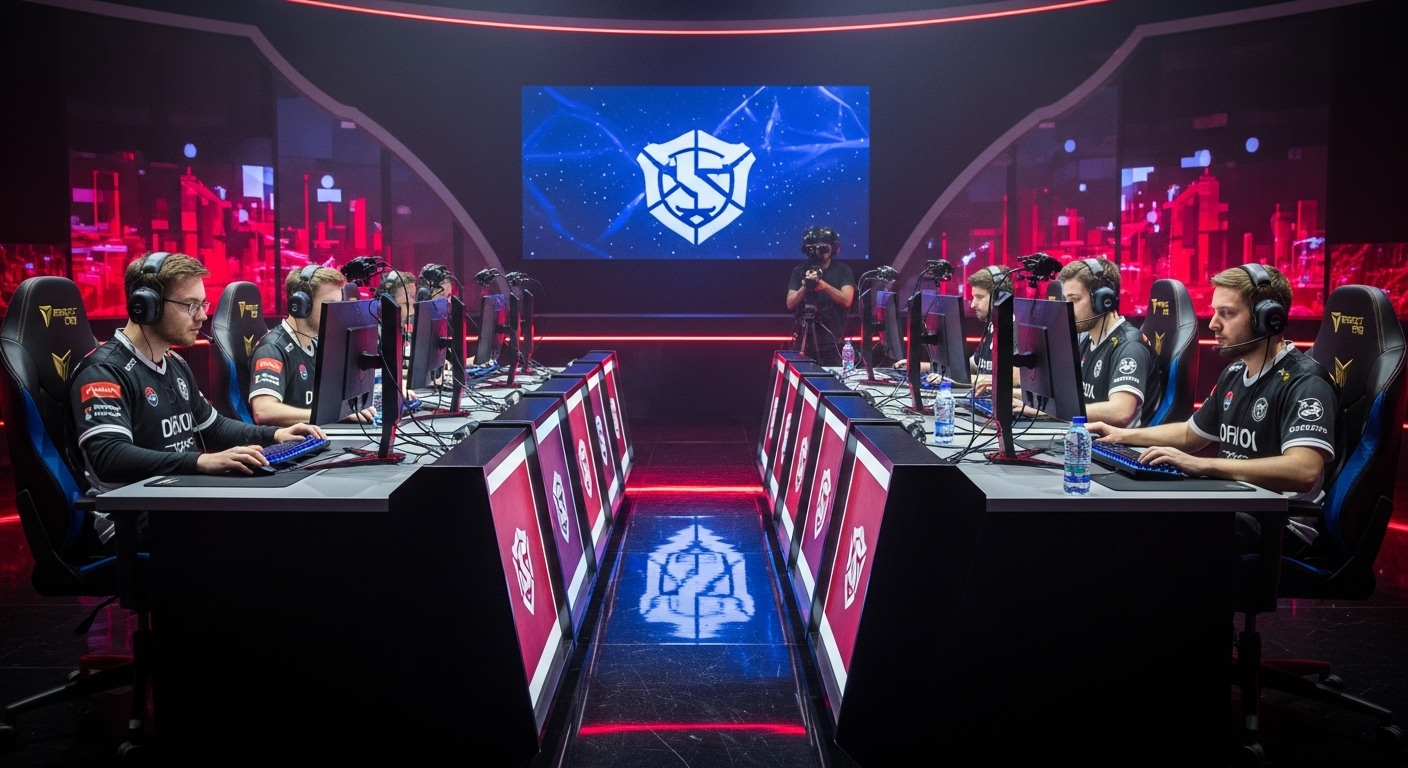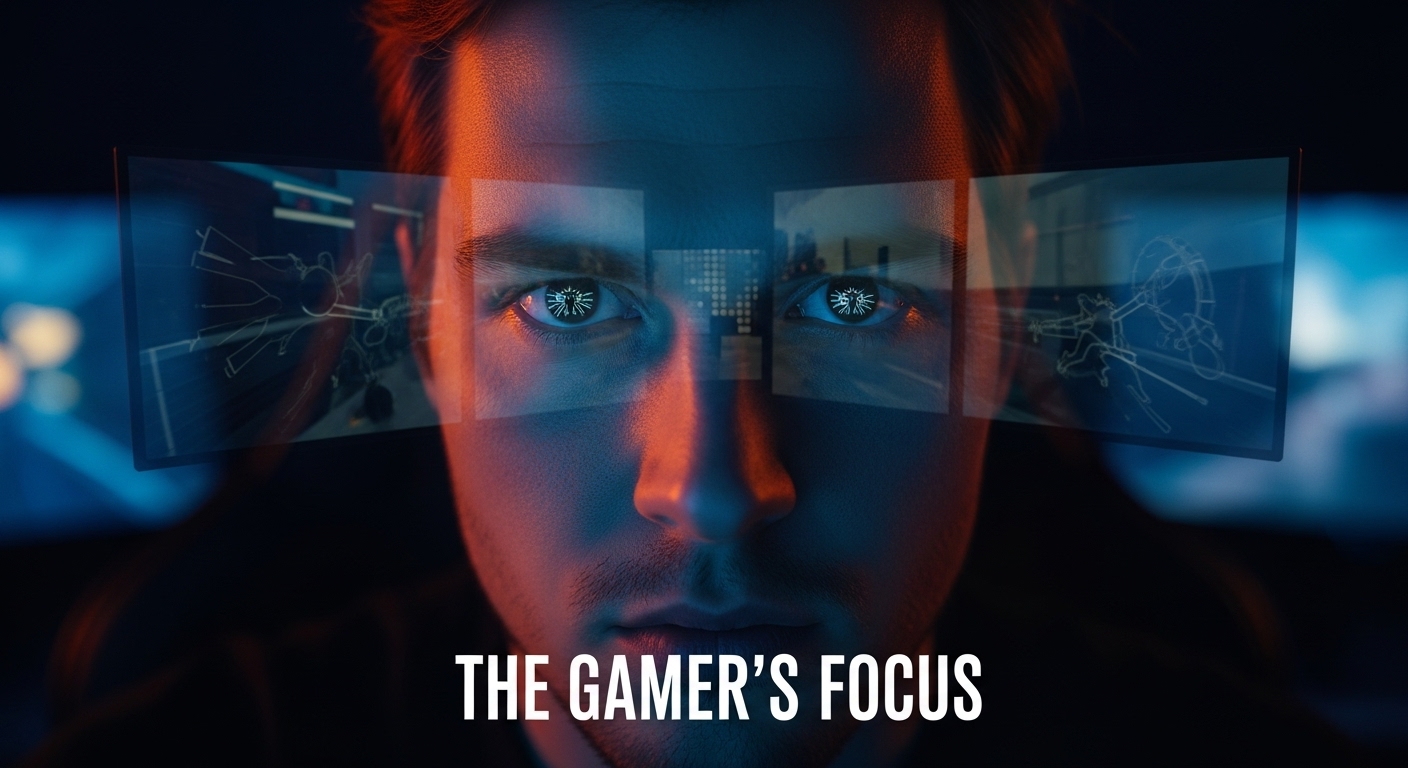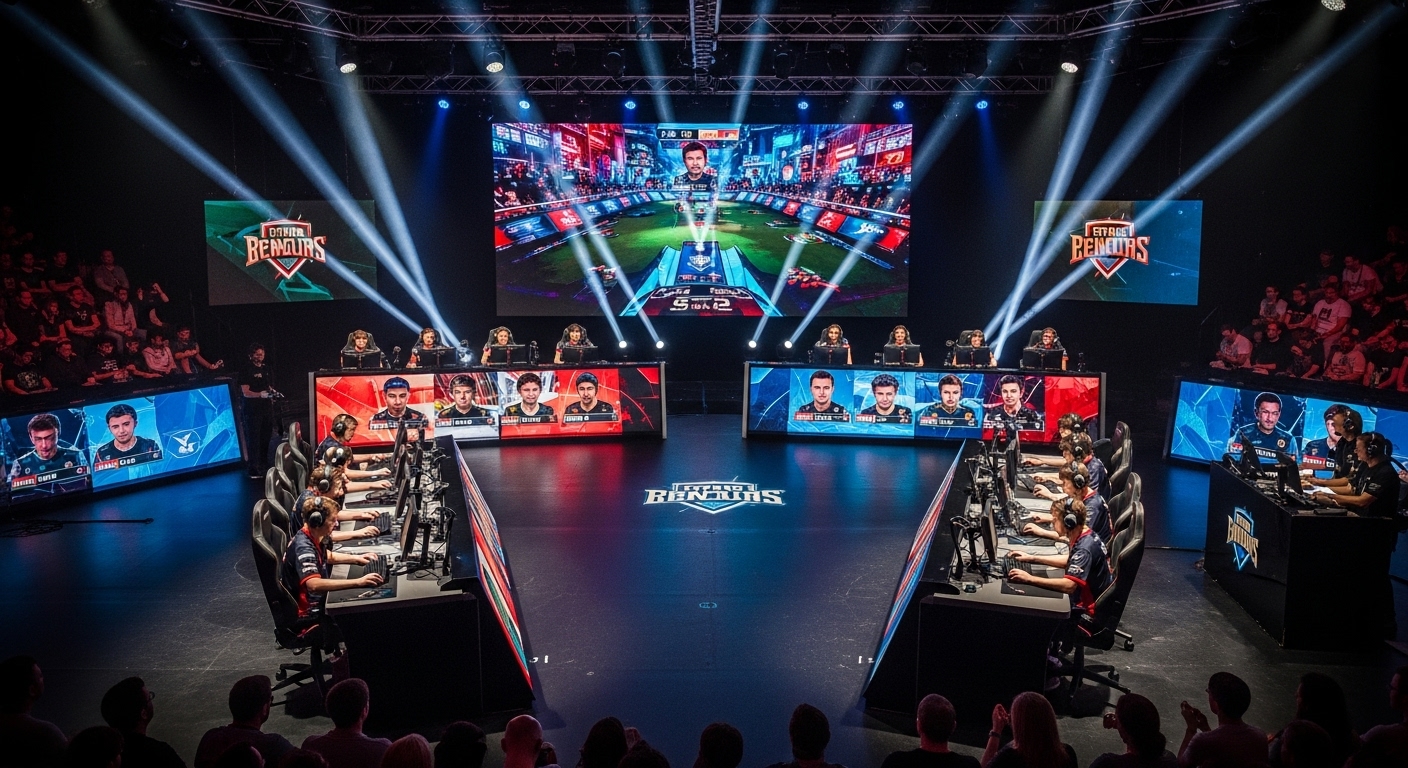Introduction
Not long ago, the idea of playing video games professionally seemed like a dream for kids who loved gaming. Today, Esports has become one of the most powerful and fastest-growing industries in entertainment. What began as small gaming competitions among friends has evolved into a multibillion-dollar ecosystem with sponsors, teams, global tournaments, and millions of fans watching live from every corner of the world.
Esports has not only changed how we view gaming but has also reshaped how we think about competition, teamwork, and even career opportunities. Let’s explore how this remarkable journey unfolded, what drives its growth, and what the future might hold for Esports as it cements itself as a dominant force in global culture.
The Early Days of Competitive Gaming
The story of Esports starts in the late 1970s and early 1980s, when arcade machines ruled entertainment centers. The first known gaming competition took place in 1972 at Stanford University, where students battled it out in the game “Spacewar.” The winner received a year’s subscription to a magazine, not a trophy or cash prize, but it marked the beginning of organized competitive gaming.
The 1980s saw the rise of arcade titles like “Donkey Kong” and “Pac-Man,” where players chased high scores that were displayed on leaderboards. These early competitions weren’t broadcasted or sponsored but built the foundation of gaming rivalry. Players traveled to arcades to challenge others, and this social aspect of competition became the seed for Esports.
By the 1990s, with the release of consoles and the birth of multiplayer PC games, competitive gaming started to take real shape. Titles like “Street Fighter II,” “Quake,” and “StarCraft” began hosting organized tournaments. South Korea, in particular, became a hotspot for professional gaming, setting up dedicated television channels to broadcast matches and celebrate gamers as national stars.
The Rise of Online Gaming and Global Connectivity
The internet changed everything. Once online multiplayer became possible, gaming transformed from a solo or local experience into a connected global pastime. Games like “Counter-Strike,” “Warcraft,” and “Dota” allowed players from different continents to compete without ever meeting in person.
In the early 2000s, broadband internet and digital platforms helped Esports gain structure. LAN parties, where gamers brought their computers to local events, gave way to global tournaments streamed online. Players began joining professional teams, often sponsored by hardware or tech brands.
This period also saw the rise of dedicated leagues and organizations. Major League Gaming (MLG), established in 2002, played a huge role in turning Esports into a recognized competitive sport. Similar organizations began forming in Asia and Europe, giving gamers an official stage to showcase their skills.
The Turning Point: Streaming and Accessibility
The single most important breakthrough for Esports was live streaming. Platforms like Twitch, launched in 2011, changed the game by letting anyone broadcast or watch gaming events in real-time. Suddenly, Esports wasn’t confined to niche communities—it was accessible to everyone.
This accessibility created a new kind of celebrity: the streamer. Gamers who were once anonymous now built massive audiences, engaging with fans directly. Viewers no longer needed cable channels or expensive tickets to watch tournaments; they could tune in from home, comment live, and even donate to their favorite players.
Streaming also helped independent tournaments flourish. A small team could organize a competition, broadcast it online, and reach thousands—or even millions—of viewers. This democratized the Esports ecosystem, making it more inclusive and dynamic.
The Growth of Esports Organizations and Leagues
As audiences grew, so did professionalism. Gaming organizations began to mirror traditional sports teams, complete with coaches, analysts, managers, and brand partnerships. Players signed contracts, received salaries, and lived in team houses for training.
Games like “League of Legends,” “Dota 2,” and “Counter-Strike: Global Offensive” became household names in the Esports world. Developers realized that maintaining a competitive ecosystem could extend a game’s life far beyond its initial release. Riot Games, for example, invested heavily in its League Championship Series, setting standards for how Esports leagues should operate.
The numbers spoke for themselves. Tournaments like “The International” offered prize pools exceeding tens of millions of dollars, funded partly by the gaming community through in-game purchases. Viewership numbers rivaled traditional sports events, with millions tuning in for finals broadcast in multiple languages.
Esports as a Cultural Movement
Esports isn’t just about competition—it’s a culture. Fans wear team jerseys, follow players on social media, and attend conventions like gaming festivals. The sense of community is intense and global. People who grew up with games now have platforms to connect with others who share the same passion.
Unlike traditional sports, Esports transcends physical limitations. It doesn’t matter where you’re from, your size, or your background; if you have skill and dedication, you can compete. This inclusivity has made Esports especially popular among younger generations who value creativity and digital freedom.
Music, fashion, and pop culture have also merged with Esports. Famous artists perform at tournaments, luxury brands sponsor teams, and gaming influences the design of sneakers and streetwear. Esports has become a lifestyle—one that blends technology, entertainment, and expression.
The Business of Esports
Behind every Esports tournament is a complex web of economics. Revenue streams come from sponsorships, advertising, merchandise, broadcasting rights, and ticket sales. Major companies see Esports as a gateway to younger audiences that traditional advertising often misses.
Brands ranging from tech giants to fast-food chains sponsor Esports teams and events. Esports arenas, once unimaginable, are now real—massive stadiums equipped with LED screens, sound systems, and stages designed for gaming showdowns.
Additionally, universities around the world have begun offering scholarships for Esports players, acknowledging it as a legitimate path of achievement. Academic institutions see value in Esports not just as entertainment but as a platform for teamwork, communication, and strategic thinking.
The Psychological and Physical Demands of Esports
While it may look effortless on screen, professional gaming requires intense discipline. Players train for hours daily, mastering mechanics, strategies, and team coordination. Reaction time, precision, and focus are critical.
The psychological strain is just as heavy. The pressure to perform, maintain rankings, and meet expectations can lead to burnout. Many teams now employ psychologists and wellness coaches to support players’ mental health.
Physical well-being also matters. Sitting for long hours can take a toll on the body, so players incorporate fitness routines and ergonomic setups to stay healthy. Modern Esports training resembles that of traditional athletes—structured schedules, diet plans, and consistent performance monitoring.
Esports in Education and Career Development
The academic world has started to recognize Esports as more than just entertainment. Universities and colleges offer degrees in game design, Esports management, and digital marketing tailored to this booming industry.
Beyond playing, Esports creates countless career paths. From event organizers to data analysts, coaches, commentators, and content creators, the ecosystem thrives on diverse skill sets. Students who pursue careers in Esports learn about teamwork, leadership, branding, and technology—skills that apply to many modern industries.
For schools, integrating Esports also promotes inclusion. It provides an alternative for students who might not be drawn to traditional sports but still crave competition and camaraderie.
The Globalization of Esports
Esports has no borders. The same game can be played and watched by people in Tokyo, New York, Berlin, or São Paulo simultaneously. Global tournaments bring together players from dozens of countries, each representing unique gaming cultures.
Asia remains the epicenter, with South Korea, China, and Japan leading in both infrastructure and player base. North America and Europe have built thriving Esports scenes with strong investment and media coverage. Meanwhile, emerging regions like South America and Africa are showing rapid growth, supported by improved internet access and mobile gaming expansion.
International competitions, such as the League of Legends World Championship, draw fans from every continent and highlight how gaming unites people regardless of language or culture.
The Role of Technology in Esports
Technology is the backbone of Esports. High-speed internet, powerful graphics, and seamless streaming platforms make it all possible. Advances in hardware—from precision mice and monitors to ergonomic chairs—help players perform at their best.
Virtual reality (VR) and augmented reality (AR) are beginning to influence Esports as well. These technologies could redefine competition by making it even more immersive. Artificial intelligence is also being used to analyze gameplay data, improve strategies, and personalize training programs for players.
As cloud gaming and 5G networks continue to expand, accessibility will improve even more, allowing people to play competitively from almost anywhere without expensive setups.
The Role of Media and Broadcasting
Mainstream media has fully embraced Esports. Major television networks, once skeptical of gaming, now broadcast tournaments alongside traditional sports. Streaming platforms like YouTube Gaming and Facebook Live compete for broadcasting rights to big events, proving the commercial power of Esports viewership.
Production quality has skyrocketed. Modern Esports broadcasts rival professional sports with expert commentary, real-time stats, instant replays, and cinematic camera angles. This level of presentation not only enhances viewer experience but also legitimizes Esports as a spectator sport on par with traditional competitions.
The Esports Community and Social Impact
Beyond entertainment, Esports communities have made meaningful social contributions. Charitable tournaments raise funds for disaster relief, education, and medical research. Streamers use their platforms to promote awareness of important issues like mental health and inclusivity.
Esports also fosters collaboration between nations and cultures. Gamers form friendships across borders, sharing experiences and learning from one another. It has become a digital space where diversity is celebrated, and cooperation thrives.
However, the community faces challenges too. Issues like toxicity, gender discrimination, and online harassment still need addressing. Many organizations are now pushing for stronger policies and safer environments to ensure that Esports remains open and welcoming to everyone.
Challenges Facing Esports
While Esports continues to grow, it faces hurdles that could shape its long-term sustainability. One challenge is maintaining player health and longevity. The average career span of an Esports player is relatively short, often due to stress and repetitive strain injuries.
Another issue lies in regulation. Unlike traditional sports with governing bodies, Esports operates across many games and platforms, each with its own rules. Establishing standardized guidelines for contracts, player welfare, and fair competition remains a complex task.
Additionally, cheating and match-fixing continue to threaten integrity. Developers and organizations constantly improve anti-cheat systems and enforce stricter penalties, but it remains an ongoing battle.
Lastly, the balance between commercialization and authenticity is delicate. As corporations invest more, fans worry about losing the genuine passion that made Esports unique in the first place.
The Future of Esports
The future of Esports looks brighter than ever. Analysts predict that Esports will continue to rival traditional sports in viewership and revenue. The next generation of gamers is growing up in a world where digital competition is just as valid as physical sport.
Virtual arenas, enhanced spectator experiences, and global sponsorships will make Esports an even more integrated part of mainstream entertainment. Mobile Esports is expected to expand dramatically, bringing in players from developing regions who may not have access to high-end gaming PCs.
Schools and governments are beginning to invest in Esports infrastructure, recognizing its potential for education, tourism, and economic growth. As technology evolves, the line between playing, watching, and creating content will blur further, creating endless possibilities for innovation.
Conclusion
Esports has traveled an incredible journey—from small gatherings of hobbyists to grand arenas filled with thousands of fans. It’s not just a form of entertainment; it’s a cultural shift that bridges generations, industries, and nations.
The essence of Esports lies in its community, diversity, and innovation. It celebrates human creativity and competitiveness in the digital age. Whether you’re a casual viewer, a hardcore gamer, or someone new to the scene, Esports offers something for everyone—a shared experience that reminds us that passion, skill, and connection can thrive in any arena, virtual or real.



